Full-body workout, fat burning, low-impact… rowing is a versatile exercise. Combined with eating a balanced diet and living a healthy lifestyle, using a rowing machine for weight loss consistently is a great option to help you row your fat off and achieve your fitness goal in 2021.
The mathematics of fat burning and weight loss is simple, you must create a calorie deficit, in other words burning more calories than you take in. In this article, we will give you a holistic analysis of losing weight with a rowing machine and offer you different approaches to reap the weight loss rewards faster.
Table of Contents
1. Rowing Machine Weight Loss: Why Do You Need to Lose Weight?
1.1 Consequences of Overweight and Obesity
1.2 Know Your BMI
1.3 Lose Weight to Improve Your Quality of Life
2. Rowing Machine Weight Loss: What’s the Ideal Body Fat Percentage?
2.1 Think Fat Loss, Not Weight Loss
2.2 What’s the Ideal Body Fat Percentage
3. Why Choose Rowing to Lose Weight?
3.1 Rowing Helps You Burn More Calorie in Less Time
3.2 Low-Impact Quality Makes Rowing Machine A Safer and Merrier Fat Burner
3.3 It’s Great for Your Heart and Lung
4. How to Achieve Your Weight Loss Goal Faster on a Rowing Machine?
4.1 What is Metabolism?
4.2 Know Your Numbers
4.3 How to Boost Your Metabolism to Row More Fat off?
5. Rowing Machine for Weight Loss: Sample Rowing Workouts
5.1 Sample Workouts
5.2 Important Note
6. The Bottom Line
1. Why Do You Need to Lose Weight?
As per the World Health Organization, approximately 500 million adults age 20 and older are obese while 1.5 billion are overweight. There is no doubt that obesity has now become a global health challenge.
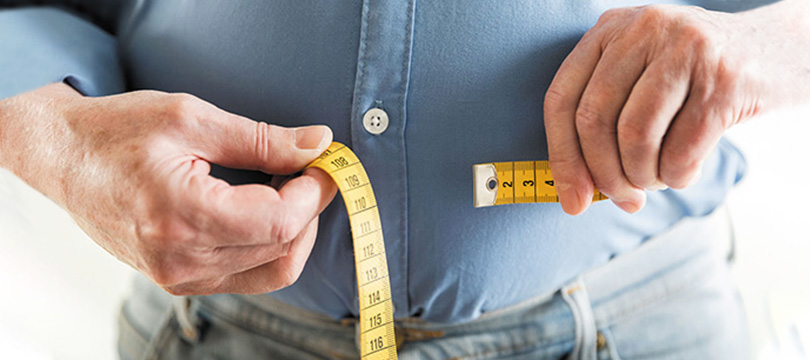
1.1 Consequences of Overweight and Obesity
People who’re overweight or obese are at higher risk for many serious diseases and health conditions, including but not limited to:
- High blood pressure
- Coronary heart disease
- Type 2 diabetes
- Stroke
- Gallbladder disease
- Osteoarthritis such as back pain or knee pain
- Sleep apnea and breathing problems
- Mental disorders such as clinical depression and anxiety
- Body pain and difficulty with physical functioning10
If you’re overweight or obese, you can reduce your risk for these diseases by successfully losing weight and keeping it off. When you shed extra fat and unnecessary pounds, you reduce the burden on your heart, lungs, blood vessels, and skeleton. You give yourself the gift of active living, you lower your blood pressure and you help yourself feel better, too.
1.2 Rowing Machine for Weight Loss: Know Your BMI
What can you do to lose weight? Knowledge is power, and you can start from a simple number. Knowing your BMI will help you identify your body composition first before officially going with your weight loss process.
1.2.1 What is Your BMI?
Your BMI (Body Mass Index) is a calculation that is used to quickly identify whether you are overweight or obese. It gauges your body status by using your body weight relative to height.
BMI is a useful, indirect measure of body composition because it correlates highly with body fat in most people.
1.2.2 How to Calculate Your BMI?
- BMI Formula
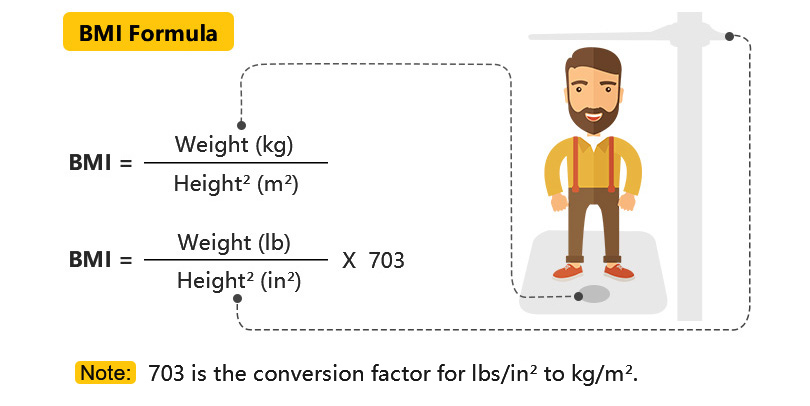
You may simply enter your height and weight, and find your BMI here.
- BMI Table
You can also determine your BMI using the table below. Find the square where your weight and height meet is an estimated number of your BMI. For example, if you weigh 180 pounds and are 5’8″, your BMI is 27.
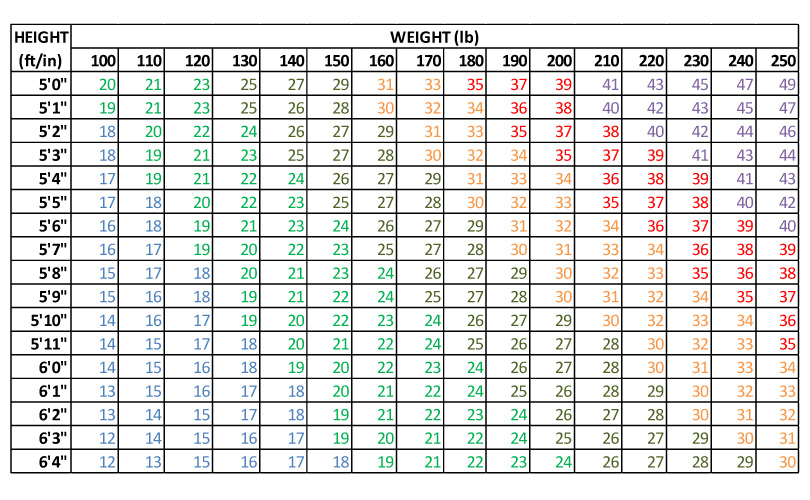
- Interpretation of BMI
If your BMI is above 25.0, you will benefit by bringing your number down below 25.
Be careful when your BMI is above 30.0, as you are at significant risk for heart health problems and other diseases associated with obesity.
If you have too much fat, especially belly fat, losing weight is a smart idea. Because your waist circumference is a good predictor of health risk.
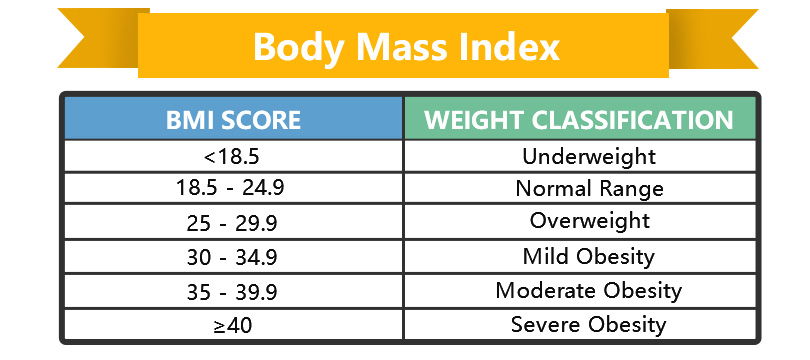
When it comes to losing stubborn belly fat, it’s been scientifically proven that fat around your abdomen is even harder to break down than fat on other areas of your body. If that’s your prime concern, visit our belly fat loss post for more scientific tips on how to row your belly fat OFF and make your abs pop.
2. Rowing Machine for Weight Loss: What’s the Ideal Body Fat Percentage?
2.1 Rowing Machine for Weight Loss: Think Fat Loss, Not Weight Loss.
When someone says they want to lose weight they usually mean they want to lose the excess fat. If this is your case, your weight loss success isn’t just what it says on the scale.
The scale might be lying to you. As it only tells part of the story. The weight number could stay the same even though progress is being made in your workouts and diet. The main reason for this is an increase in muscle mass with a decrease in fat mass, which is great progress.
Fat loss is the main goal and muscle gain is not only good for your overall health but helps you burn more fat throughout the day while resting.
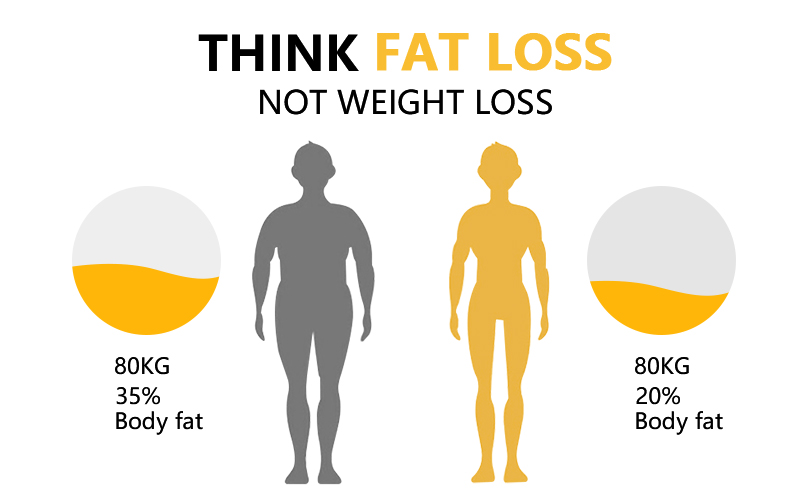
Think fat loss, not weight loss. Improving your body composition will build a better you.
2.2 What’s the Ideal Body Fat Percentage?
If you are on your weight loss and healthy dieting journey, you might often come across the term ‘body fat percentage’. What does it actually mean?
2.2.1 What is Body Fat Percentage?
Body Fat Percentage is the amount of fat in your body, compared to everything else. Everything else includes blood, bones, water, etc. There are two types of body fat: storage body fat and essential body fat. Both are taken into account when calculating body fat percentage.
2.2.2 What is the Healthy Body Fat Percentage for You?
Before measuring your body fat percentage, check out the age-specific body fat percentage recommendations for men and women below. Thus, you can have a clue where you fall on the range.
Women:
- 20-40 yrs old: Underfat: under 21 percent, Healthy: 21-33 percent, Overweight: 33-39 percent, Obese: Over 39 percent
- 41-60 yrs old: Underfat: under 23 percent, Healthy: 23-35 percent, Overweight: 35-40 percent Obese: over 40 percent
- 61-79 yrs old: Underfat: under 24 percent, Healthy: 24-36 percent, Overweight: 36-42 percent, Obese: over 42 percent
Men:
- 20-40 yrs old: Underfat: under 8 percent, Healthy: 8-19 percent, Overweight: 19-25 percent, Obese: over 25 percent
- 41-60 yrs old: Underfat: under 11 percent, Healthy: 11-22 percent, Overweight: 22-27 percent, Obese: over 27 percent
- 61-79 yrs old: Underfat: under 13 percent, Healthy: 13-25 percent, Overweight: 25-30 percent, Obese: over 30 percent
As you age, your acceptable body fat within these ranges increases.
2.2.3 How to Calculate Your Body Fat Percentage?
According to a study published in the British Journal of Nutrition in 1991, if you are an adult, you may use the following gender-based formulas in conjunction with your BMI.
Women:
(1.20 x BMI) + (0.23 x Age) – 5.4 = Body Fat Percentage
Men:
(1.20 x BMI) + (0.23 x Age) – 16.2 = Body Fat Percentage
Note: This is a quick formula to calculate body fat percentage and give you a glance at your body fat status.
Marc Perry, BUILTLEAN founder, outlines several ways to measure body fat percentage that are easy and effective.
3. Why Choose Rowing over Other Forms of Fitness for Weight Loss?
One of the main reasons why we spend our precious time on workouts is to get rid of fat. Why do we choose rowing out of so many forms of fitness? Check below the top three benefits of rowing machine for weight loss:
3.1 Rowing Helps You Burn More Calorie in Less Time
Rowing is a great low-impact option for weight loss. It offers you a total-body workout, helping you burn more calories safely and effectively.
3.1.1 Full Body Workout Helps You Burn Calorie Faster
Tight scheduled and want to accelerate your weight loss progress? Give the rowing machine a go!
Unlike other workout exercisers, a rowing machine gives your entire body a thorough workout in and out while having low impact.
Regular workouts on a rower can help you burn calories, tone muscles, and give you increased energy. It is an incredible fat burner and it engages all the major muscle groups, including legs, arms, back, abdominals, and buttocks. It gives you a full-body workout in less time.
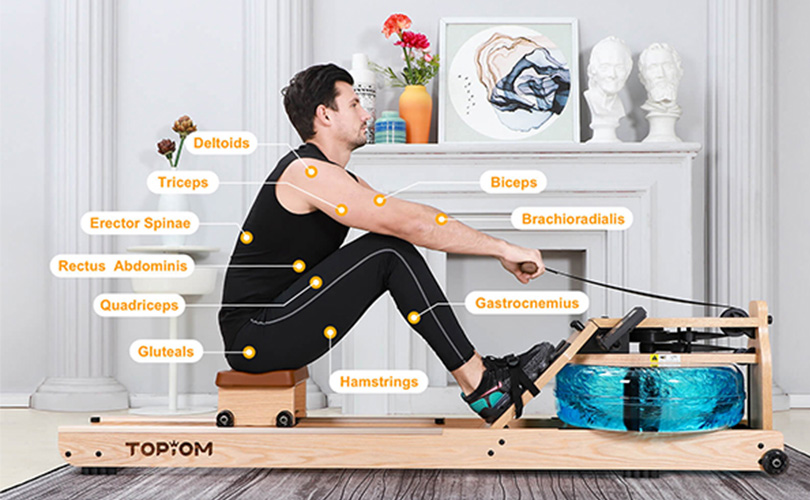
Legs provide most of the power of the rowing stroke and your upper body adds the rest. Besides, rowing is one of the few aerobic activities that can actually strengthen your back. The rowing ratio is typically around 65-75% legs and 25-35% upper body. Meanwhile, rowing keeps your heart rate elevated while building core strength.
Doing each group separately can take three times as long and in some cases burn fewer calories. This tripling-up effect is a great rowing machine benefit. As it really challenges your body, you’ll see a difference faster.
3.1.2 Calories Burned on a Rowing Machine
Since rowing gets almost all body muscles into business, the energy consumption during this exercise is high.
British Rowing says rowing helps burn calories – between 400 to 1000 calories an hour (depending on your pace and weight).
The Harvard Health Publications also made a research on the calories burned by activity and weight. A glimpse of the rowing activity is provided below.
Calories Burned in 30-Minute Activities
| Gym Activities |
125-pound person | 155-pound person | 185-pound person |
|---|---|---|---|
| Rowing, Stationary: moderate | 210 cal | 252 cal | 294 cal |
| Rowing, Stationary: vigorous | 255 cal | 369 cal | 440 cal |
3.2 Low-Impact Quality Makes Rowing Machine A Safer and Merrier Fat Burner
One of the rowing machine’s claims to fame is its low impact and non-weight bearing while giving you muscle strengthening and gentle cardio work. Besides, a rowing machine will help you strengthen your joints, and increase mobility without causing more damage.
You know what? Every kilogram of excess weight exerts about 4 kilograms of extra pressure on the knees. Besides, higher weight increases joint forces and the risk of developing osteoarthritis. Obesity is also linked to earlier onset arthritis.
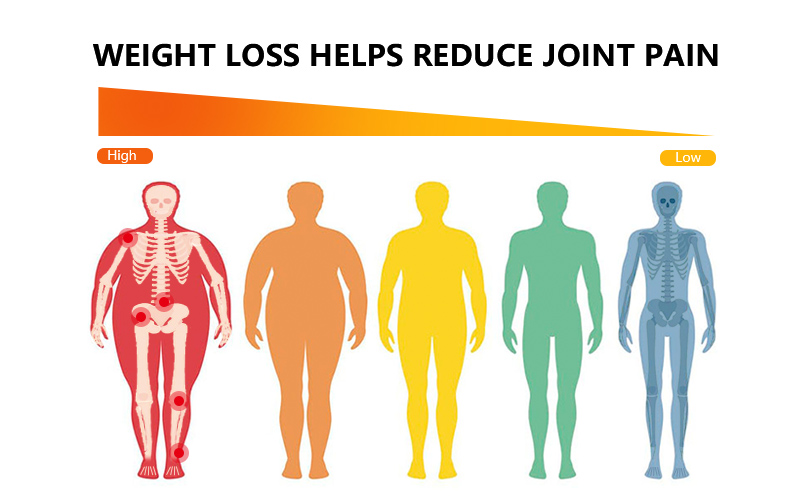
In contrast to other popular workout routines such as running or cycling, rowing is a smooth, rhythmic motion that puts minimal load on your joints and much safer for your body whilst giving you a good full-body workout.
“The benefits of rowing are unquestionable. There aren’t many forms of exercise that act as a low impact total body workout that dramatically improves weight loss as well as muscle and joint mobility.”
–Thomas Fitzgerald, Head PT at fitness studio chain F45
This is all thanks to the position of the body. The entire workout is done seated. When you row properly and maintain a relaxed body posture, you are at the lowest risk of feeling a negative impact, unlike the resistance integral to running.
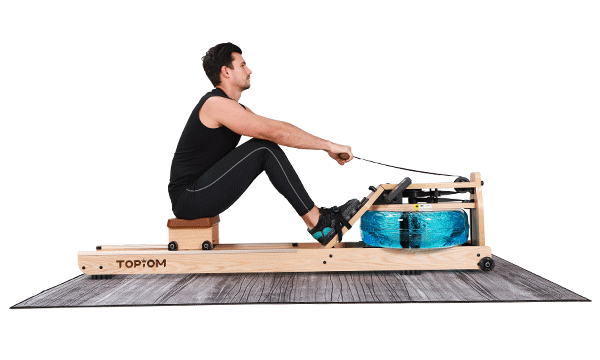
Moreover, by engaging the back muscles, the rowing machine can help prevent or even relieve back pain. A godsend for the most fragile at the knees, hips, ankles, or shoulders. A 2014 study of 24 people over 8 weeks also found that joint torques, or rotations, in the elbow, shoulder, lumbar, and knee improved by 30 percent.
If you are looking for a low-impact all-round sport for weight loss, the rowing machine is for you!
3.3 It’s Great for Your Heart and Lung
Rowing is a cardiovascular exercise, which increases your lungs’ ability to provide oxygen to the heart, blood as well as the rest of your body. In addition, it will help lower your blood pressure while keeping your arteries cleaner.

Rowing workouts help improve your heart and lung health. It requires you to breathe more oxygen while you make repetitive rowing motions and sweat.
The more you breathe, the harder your heart and lungs work to meet the oxygen demands.
Over time, your body is able to perform more rowing strokes as you get into better shape.
4. Rowing Machine for Weight Loss: How to Achieve Your Goal Faster?
In order to achieve your weight loss goal faster, you need to boost and maximize your metabolism to burn more fat efficiently.
4.1 What is Metabolism?
In fitness circles, “metabolism” is often used interchangeably with “metabolic rate” to refer to the number of calories you burn in maintaining body functions and fueling your activities.
But there’s more to metabolism than just calorie burning. Metabolism also encompasses chemical and physical reactions occurring in every one of your body’s tissues – from using proteins for muscle-building (called anabolism) to breaking down food into the proteins, fats, and carbs that your body uses to fuel itself (called catabolism). You need both processes to develop strength and stamina and to build resistance to aging and disease.
What benefits one aspect of metabolism generally benefits the others, says Paul Chek, holistic health practitioner and founder of the Corrective Holistic Exercise Kinesiology (C.H.E.K) Institute in Vista, Calif. (www.chekinstitute.com). “Metabolism is like a spider web,” he explains. “You can’t pull on one part of the web without affecting the others.”
Nutrition, exercise, and other lifestyle factors, like sleep and stress, can all go a long way toward building or busting your metabolism. But keep in mind that many diseases, including thyroid disorders and diabetes, can interfere with metabolic processes. Talk to your doctor about ruling out such medical conditions if you suspect you might be affected by one, and do not significantly alter your exercise or nutrition program without consulting a health professional.
4.2 Know Your Numbers
Want to know more about the state of your metabolism? Consider undergoing a metabolic assessment. These simple tests (conducted by capturing your respiration with a mask and feeding the information to a computer) are now available at many leading health clubs, and they take less than 30 minutes to complete.
The gold-standard tests measure your body’s use of oxygen and production of carbon dioxide to determine the rates at which you’re burning fat or carbohydrates for fuel. The following two assessments may cost from $50 to $200 each and may require the purchase of a reusable testing mask for about $40. They can be performed in many major health clubs and will give you the most accurate picture of your current metabolic state.
· Resting Metabolism
Measuring resting metabolism takes 15 to 20 minutes; you simply sit in a chair and breathe into a mask. Your total caloric expenditure is figured as a combination of your resting metabolic rate (RMR) and lifestyle activities. RMR tells you the number of calories burned just by keeping your internal organs (brain, heart, lungs, kidneys, etc.) functioning. Then it’s adjusted for your lifestyle-activity level. Combining your RMR with the calories you need to perform daily activities gives an idea of how many calories you should consume to maintain your weight.
· Exercising Metabolism
Exercising metabolism tests vary in length according to your level of fitness. They require you to exercise at a range of intensities – usually by walking or jogging on a treadmill – while breathing into a mask. The mask is hooked up to equipment that measures your body’s use of oxygen and carbon dioxide. A computer then calculates your body’s ability to burn calories and fat at various exercise intensities. You wind up with a report (your own personal metabolic profile) that shows which exercise intensities produce the greatest caloric- and fat-burn rates, and which produce the best cardio-fitness gains.
4.3 Boost Your Metabolism to Burn More Fat
If you want to take off and keep off unwanted pounds, a healthy metabolism is your body’s best fat-burning friend.
Factors that affect the speed of your metabolism fall into three major categories – fitness, diet, and lifestyle. We’ve highlighted the useful approaches that can rev up your metabolism. Applying these approaches will boost your caloric burn, promote anabolic growth, and encourage the use of fat as a fuel source.
· Fitness
a. Heart Rate Training – Row Smarter to Burn More Fat
What is heart rate training?
Heart rate training uses your heart rate or beats per minute (bpm) as a guide to hit a certain rowing intensity. You use a heart-rate monitor to train at a specific effort level for a set amount of time.
It is a different way to be successful at rowing. Heart rate training allows for continued improvements over time. It doesn’t have to be rowing as hard as you possibly can to burn more fat.
Training in the right heart rate zone will carry your weight loss goal right over to the road.
Heart Rate-FAT-BURNING ZONE
Generally speaking, when you’re working out, you’re within one of five HR zones:
ZONE 1
50 to 60 percent of your maximum heart rate. This is your warm-up, cool-down, and recovery zone.
ZONE 2
60 to 70 percent of your max heart rate. This is an average effort that’s easy to maintain while holding a conversation. (Think a long, slow distance row.)
ZONE 3
70 to 80 percent of your max heart rate. (Slightly easier than a tempo row.)
ZONE 4
80 to 90 percent of your max heart rate. This is a hard effort, but it’s sustainable. (Now you’re at tempo pace!)
ZONE 5
90 to 100 percent of your max heart rate. This is as hard as you can go.
Zones 1 and 2 are your main fat-burning zones. When you’re working out within these zones, most of the calories burnt are coming from fat. The higher your zone, the less fat and more sugars you’re burning.
Be aware of your HR zone to make sure you’re rowing your fat off. For a deeper dive of heart rate training, you can learn more here.
b. Add Variety to Your Exercises
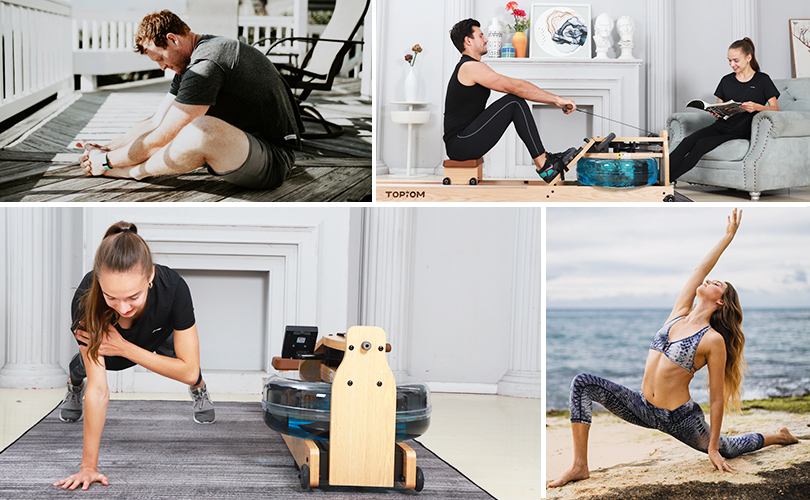
Why do you need variety in your exercises?
Do you feel like you’ve stopped making progress, either in weight loss or in your fitness journey? Even though you’re still eating carefully and exercising regularly.
You’ve hit a weight-loss plateau or a workout plateau.
When you reach a plateau, your weight-loss efforts may stall and you may start to feel unmotivated or bored with your workouts.
If you are happy with your current weight or level of fitness, keep going with your current nutrition plan and exercise routine to maintain weight and fitness!
However, if you are frustrated with a lack of progress, don’t despair — this happens to most people! There are actions you can take to overcome the plateau.
You may decrease the calories you take in or add variety to your exercises. Using the same approach that worked initially may not lead to more weight loss.
How to add variety to your exercises?
To keep seeing results, you need to make small changes regularly so as to keep your workout fresh. It encourages your body to continue changing, adapting, and achieving the desired fitness result.
Some examples of adding variety to your exercises include:
> Increasing number of reps of an exercise.
> Finding different workout songs to motivate you.
> Choosing new exercises to shake things up.
Adding excitement and variety to your workouts can help you break through plateaus and avoid boredom. Thus your body doesn’t get used to the same old routine. It’s not only fun but is vital to help you commit to lifelong fitness.
c. Max out the Afterburn Effect
Most rowers are aware of the high caloric burn that takes place during rowing workouts.
However, less commonly known is the fact that a small tweak to the intensity or structure of your workouts can elevate the afterburn effect. It is scientifically known as excessive post-exercise oxygen consumption (EPOC).
The EPOC consumption boosts your metabolic rate, giving you extra burn, additional weight loss benefits, and enhanced performance during each session!
What is the afterburn effect?
In general, the afterburn effect is simply additional energy expenditure that occurs after exercise. Meaning that if you train strategically, you can burn even more calories after you have already completed your workout.
How to maximize your afterburn effect?
The intensity is the key. The best way to benefit from the rowing afterburn effect is through high-intensity interval training, commonly referred to as HIIT. Although a steady row also burns calories, the rowing afterburn effect isn’t as significant as it would be after a HIIT or interval training.
Applying HIIT principles to a rowing workout is easy. The basic idea is to switch back and forth between higher and lower intensity.
You can simply alternate short periods of very high-intensity exercise (up to 90 percent of your maximum heart rate) with more moderate periods of rowing. A good example would be to row as hard as you can for 30 seconds, giving it your all with maximum effort, followed immediately by 60 seconds of rowing at a much slower pace to bring your heart rate back down. Repeat this cycle 10 times.
Additionally, HIIT-style exercise performed on a regular basis (1-3 times per week, depending on your fitness level, for example) will not only help you lose weight but also make you faster and stronger.
· Diet
Before kicking off your weight loss journey with a rowing machine, pay close attention to what you eat.
Here is the dietary recommendation according to the U.S. Department of Health and Human Services.
A healthy diet includes:
- A variety of vegetables from all of the subgroups-dark green, red and orange, legumes ( beans and peas), starchy
- Fruits, especially whole fruits
- Grains, at least half of which are whole grains
- Fat-free or low-fat dairy, including milk, cheese, and/or fortified soy beverages
- A variety of protein foods including seafood, lean meats and poultry, eggs, nuts, and soy products
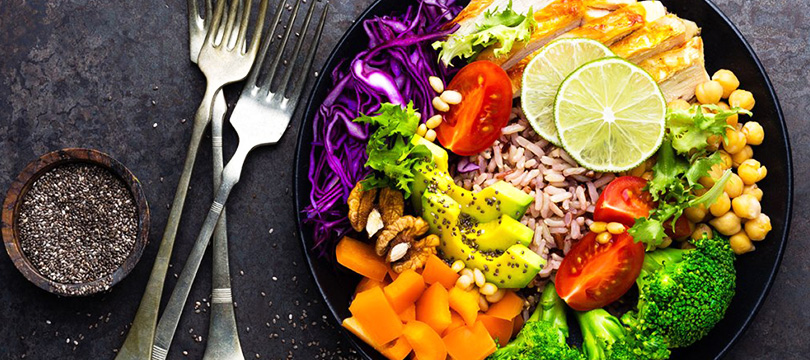
· Lifestyle
Along with eating right and exercising, a healthy lifestyle is an important part of weight loss and maintenance. Water and sleep are something we all need but often neglect to prioritize. However, you may have more success in weight loss if you get the knack.
a. Drink More Water
Drinking water can help you burn more calories and rev up your metabolism. Together with regular exercise, it benefits your weight loss and maintenance.
Studies have monitored overweight people who drank 1-1.5 liters (34–50 oz) of water daily for a few weeks. They found a significant reduction in weight, body mass index (BMI), waist circumference, and body fat.
b. Sleep Better
If you’re making efforts on exercising and dieting to lose weight or but the scale won’t budge, you might need to take a look at your sleep habits.
A study that features in the International Journal of Obesity has found a link between insufficient or disrupted sleep and weight loss. The results showed that overweight people who did not sleep well lost less weight than their peers who had no sleep problems.
Get enough sleep, quit staying up late, and keep a consistent sleep schedule.
If you would like to master your metabolism, you may find a wide range of metabolic information here, from medical conditions to how factors like diet, fitness, and lifestyle can boost your metabolism.
5. Rowing Machine for Weight Loss: Sample Rowing Workouts
Ready to feel the burn? Try some of the sample workouts below, we suggest doing two times a week (mixed in with a true strength-training day, a medium-intensity day, and a low-intensity day), and you’ll be sizzling until sundown.
5.1 Sample Workouts to Get You Ripped
Get started with the workouts below and row your way to a sexy you!
WORKOUT 1
Row 250 meters
Rest 1 minute
Total duration: 20 minutes
Note: This interval workout has a 1:1 work-to-rest ratio. The rowing should be completed in less than a minute. Rest one minute, then repeat for a total of 10 rounds.
WORKOUT 2
You have six minutes to row 1,000 meters. If you finish early—which you should—perform an all-out sprint of burpees.
WORKOUT 3
Row for 30 calories
30 Russian kettlebell swings
30 AbMat situps
Perform row, kettlebell swings, and situps. Rest one minute. Repeat for 4 rounds.
WORKOUT 4
Directions: Do pushups immediately after the row. Rest as needed between rowing sessions.
Row 1,000 meters
20 hand-release pushups
Row 750 meters
30 hand-release pushups
Row 500 meters
40 hand-release pushups
Row 250 meters
50 hand-release pushups
WORKOUT 5
50 air squats
25-calorie row
40 Russian kettlebell swings
20-calorie row
30 situps
15-calorie row
20 pushups
10-calorie row
10 burpees
5.2 Rowing Machine for Weight Loss: Important Note
Please be aware that weight loss results and health changes/improvements vary from individual to individual. Always consult with your doctor or physician before making health decisions or beginning any new exercise regimen.

The Bottom line
Knowledge is Power and Consistency is the Key!
Now that we’re really digging into the science behind using a rowing machine for weight loss. It’s time to use the knowledge to understand and reshape your body according to science!
SOME PEOPLE WANT IT TO HAPPEN,
SOME WISH IT WOULD HAPPEN,
OTHERS MAKE IT HAPPEN!
–Michael Jordan
Don’t just wish for it, work for it. Stay consistent with your diet and exercise, YOU CAN MAKE IT HAPPEN!
Thanks for reading and enjoy your fat-burning journey with the rowing machine!

